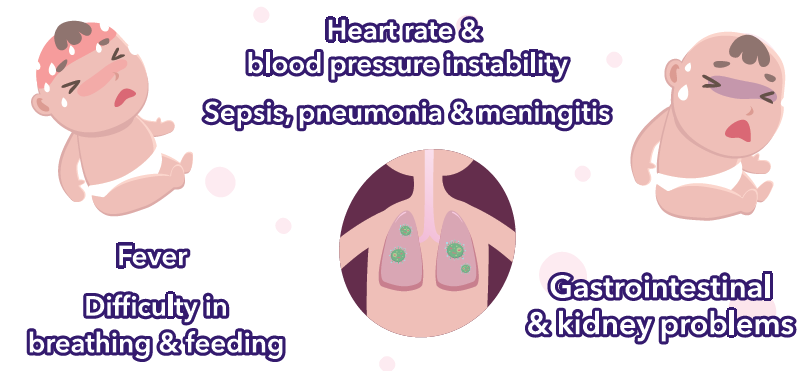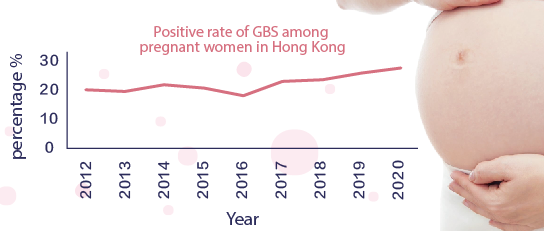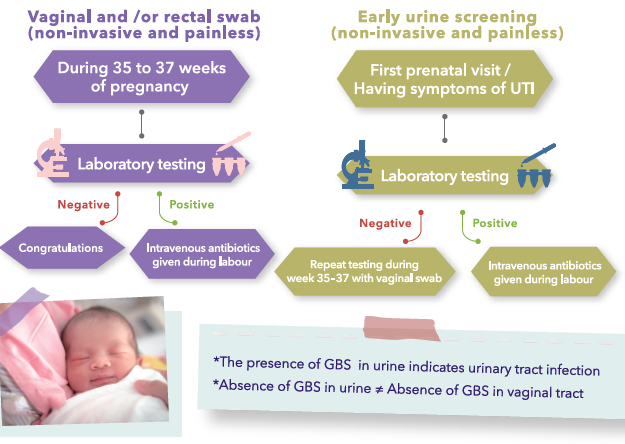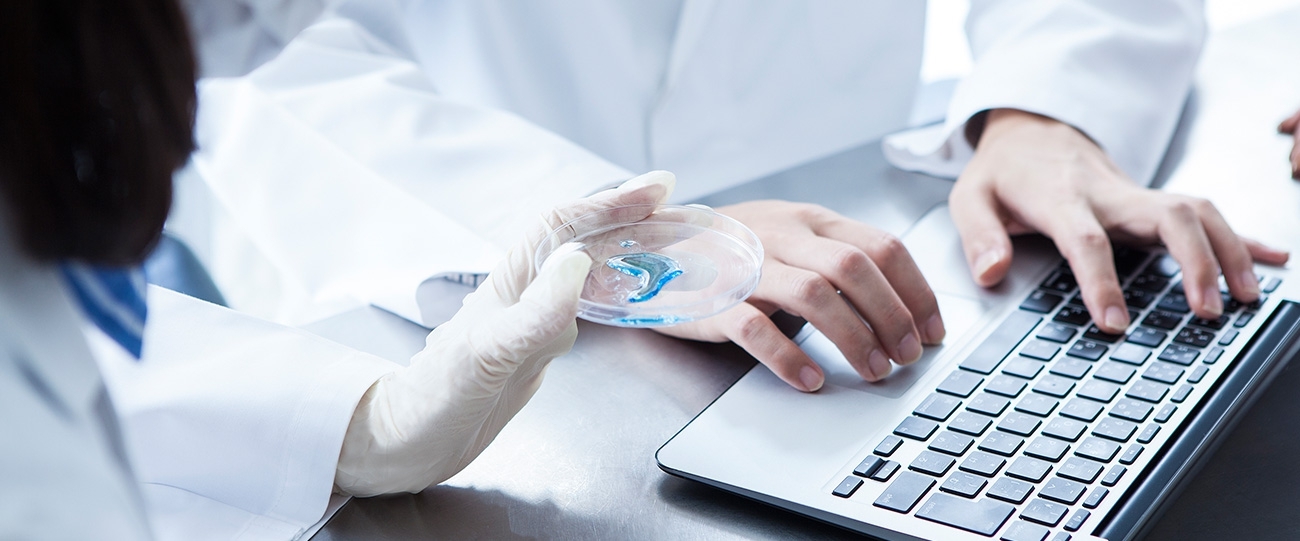DiagRIGHT® Group B Streptococcus EARLY Screening for Pregnant Women(IGB)Back
Approximately 1 in every 100 – 200 pregnant women with GBS colonisation will give birth to a baby with GBS infection
What is Group B Streptococcus (GBS) ?
• Group B Streptococcus (GBS) is a type of bacteria which normally lives in the intestine, urinary and reproductive tracts of men and women
• It can be found in 10 – 30% of pregnant women’s vagina or rectum
• Most pregnant women who are colonised with GBS have no symptoms. Some of them may develop urinary tract infection caused by GBS
• It is not a sexually transmitted disease
How does GBS infect the baby ?
• From mother to baby during labour
• From natural environment
Poses a serious threat to newborn
• Infection can be classified into early-onset (<1 week after delivery) or late-onset (>1 week to a few months after delivery)
• Early-onset GBS infection in newborn is life-threatening as it may result in sepsis, meningitis and pneumonia etc.
• In Hong Kong, the incidence rate of early-onset GBS infection is 1 in 1000 births
Symptoms of early onset GBS infection :

1. Fever
2. Difficulty in breathing & feeding
3. Heart rate & blood pressure instability
4. Sepsis, pneumonia & meningitis
5. Gastrointestinal & kidney problems
What is the positive rate of GBS among pregnant women in Hong Kong?
In Hong Kong, one in every five pregnant women has GBS colonization*

*Data collected from Universal Prenatal Screening for GBS in HK, from 2012 to 2020, offered by the Hospital Authority & the Department of Health
Why Group B Streptococcus EARLY Screening for Pregnant Women is so important ?

*Source : CDC,2020
How can I find out if I have GBS ?

Who should take the test?
•Women at first prenatal visit
•Women having urinary tract infection during pregnancy
•Women at 35-37 weeks of pregnancy
TIPS BOX : There is increasing evidence indicating the association of GBS asymptomatic bacteriuria with miscarriage, premature labour or stillbirth
The Procedures of GBS EARLY Screening for Pregnant Women ( TAT: 2 DAYS )


Approximately 1 in every 100 – 200 pregnant women with GBS colonisation will give birth to a baby with GBS infection
What is Group B Streptococcus (GBS) ?
• Group B Streptococcus (GBS) is a type of bacteria which normally lives in the intestine, urinary and reproductive tracts of men and women
• It can be found in 10 – 30% of pregnant women’s vagina or rectum
• Most pregnant women who are colonised with GBS have no symptoms. Some of them may develop urinary tract infection caused by GBS
• It is not a sexually transmitted disease
How does GBS infect the baby ?
• From mother to baby during labour
• From natural environment
Poses a serious threat to newborn
• Infection can be classified into early-onset (<1 week after delivery) or late-onset (>1 week to a few months after delivery)
• Early-onset GBS infection in newborn is life-threatening as it may result in sepsis, meningitis and pneumonia etc.
• In Hong Kong, the incidence rate of early-onset GBS infection is 1 in 1000 births
Symptoms of early onset GBS infection :

1. Fever
2. Difficulty in breathing & feeding
3. Heart rate & blood pressure instability
4. Sepsis, pneumonia & meningitis
5. Gastrointestinal & kidney problems
What is the positive rate of GBS among pregnant women in Hong Kong?
In Hong Kong, one in every five pregnant women has GBS colonization*

*Data collected from Universal Prenatal Screening for GBS in HK, from 2012 to 2020, offered by the Hospital Authority & the Department of Health
Why Group B Streptococcus EARLY Screening for Pregnant Women is so important ?

*Source : CDC,2020
How can I find out if I have GBS ?

Who should take the test?
•Women at first prenatal visit
•Women having urinary tract infection during pregnancy
•Women at 35-37 weeks of pregnancy
TIPS BOX : There is increasing evidence indicating the association of GBS asymptomatic bacteriuria with miscarriage, premature labour or stillbirth
The Procedures of GBS EARLY Screening for Pregnant Women ( TAT: 2 DAYS )

Service Procedure
Service Procedure
PART 1 : Contact your physician or your clinic
PART 2 : Draw sample from the clinic
PART 3 : Receive Report
PART 4 : Once the report is ready, the clinic will inform you to collect your report. If you need report counselling service, please contact the clinic.



